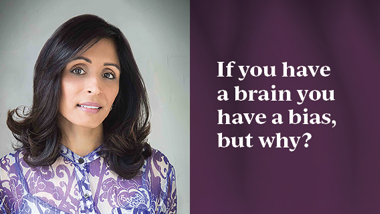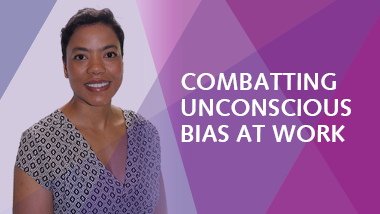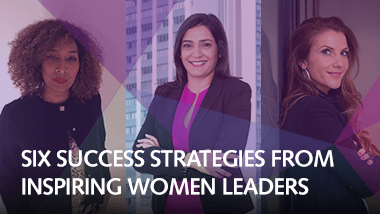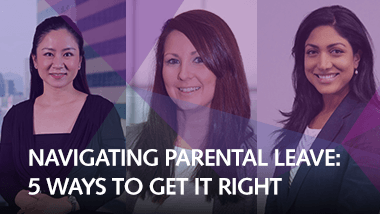If you have a brain you have a bias, but why?

For International Women’s day on 8 March 2022, we celebrated the theme of #BreakTheBias by hosting a global ‘Making the unconscious conscious’ webinar for our employees presented, by Jay Rai, a specialist in the neuroscience of mental health and empowering people through retraining the brain, from leading wellbeing company, Push.
Here, Jay shares with you the science of why and how we are unconsciously biased, along with ways we can overcome gender biases frequently found in the workplace.
How does the brain and your system of biases work?
Your mind is separated into two different areas that work in exceptionally different ways. You have your conscious mind in which you tend to operate around 5% of the time, and your subconscious mind where 95% of your mental activity takes place.
Your conscious mind is where you analyse and make decisions, while your subconscious mind is where you store emotions. Because your subconscious mind stores your emotions in a way similar to a ‘filing system’, it means that everything you say and do fits a pattern consistent with how this emotional data has been ‘filed’ in your brain.
Similar to an autopilot function, your subconscious mind is responsible for automatic organ functions such as controlling your heart beating, and things which we often take for granted on a daily basis. By understanding the subconscious mind, you can begin to see why you and everyone else, have biases that we aren’t unaware of.
Why do you have biases?
The long story short is that, if you have a brain you have a bias. But why?
Your brain can consciously only process around 40 pieces of information per second, while your unconscious mind can process significantly faster at approximately 11 million pieces of information per second.
In order to keep up with all the stimuli that surrounds you - which is a lot – you create mental shortcuts that make decision-making easier. Your brain categorises people and situations as a way to make sense of all the information you are being presented with. Once categorised, this information is then ‘filed’ away into your subconscious as a means to speed up your decision-making. Not only is this process a survival method you are undertaking, but it means that bias is inescapable.
When do you experience bias?
We experience bias in our everyday lives. For example, if you are actively seeking a new relationship, how many more couples do you then started to notice? If you are looking for a new car, you then suddenly began to see that car in commercials and on the street. Your perceptive lens enables you to see certain things, and miss others. The things you see depends on the focus of your unconscious mind as it filters through the evidence you have already stored.
Another way your mind does this is by supporting your already held points-of-view, which will be formed according to your mental filing system, and disproving points of view with which you disagree. As a result of these pre-established filters, you see things, hear things, and interpret them differently than other people might - or you might not even see them at all!
We all have unconscious bias based in the way our brain ‘files’ and stores information. Having bias doesn't make us bad people, it's just how we have learnt to process our environment to keep us safe. But unconscious bias does influence the vast majority of decisions we make which is why there is a need for us to re-examine them on a regular basis and see if there is anything which needs changing in our mindset.
Addressing unconscious bias in the post-pandemic workplace?
1. Unequal pay
Unequal pay is a significant gender gap still found in workplaces today. Often driven by unconscious biases, this can be addressed through salary reviews to close the gender pay-gap. Unequal pay can also be addressed during the recruitment process by not asking candidates their current salary. In the US a salary history ban has been enacted in some states to reduce the impact of historical discrimination. Its also important to consider women returning to the workforce after having to leave due to the pandemic as they may face a "pay penalty" due to of their absence over the last few years.
2. Interview questions
Are men and women interviewed differently? This is often a subtle workplace bias and one which can be hard to pinpoint. Nonetheless, gender biases can lead to men and women being interviewed differently, whether that be through questions asked or preconceived notions leading to different interpretations of candidates’ answers. To debunk bias in the interview process, certain questions such as those about family life should be out of bounds and interviewers should aim to ask a standard set of pre-planned question with deviations only when necessary and appropriate.
3. Flexibility stigma
With many companies transitioning from full time work-from-home patterns during the pandemic to hybrid working as people return to the office, we need to be mindful to avoid a two-tier workforce, where those without responsibilities that keep them at home and who are able to go into the office can build deeper relationships and advance their careers ahead of those working from home, who will more often than not be women. It is important to be mindful that employees who aren’t able to be as present in the office are given just as much opportunity as those who are able to be. This can be done through a ‘pre-thinking’ strategy where desired action is planned ahead of time. For example, if a new project needs to be assigned to someone, the delegating manager can think to themselves “if I feel the impulse to give this project to those physically around me by default then I will stop myself and re-evaluate a more inclusive strategy to include and benefit those also not visible to me according to merit and performance”.
Read more:
How I combat unconscious bias in the workplace
Share this:






